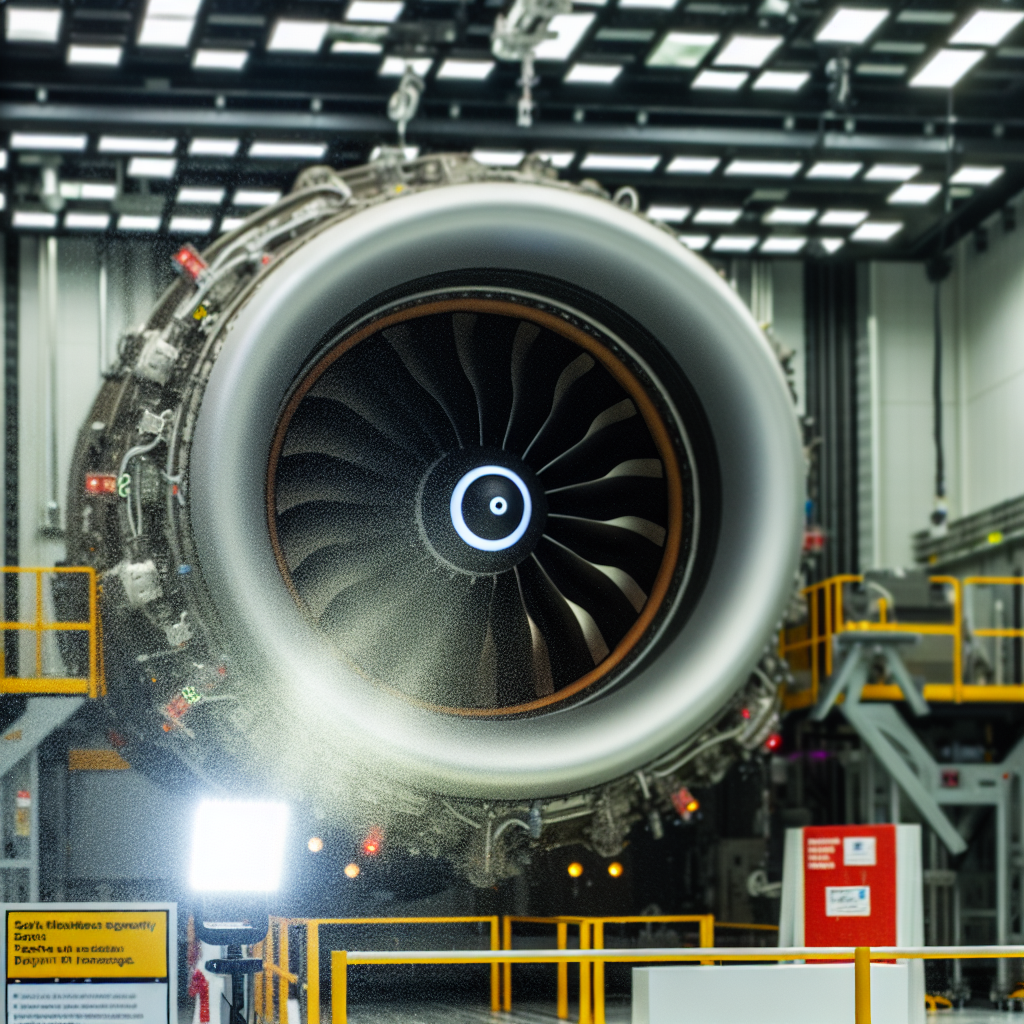BOSTON- GE Aerospace has successfully completed its initial set of GE9X dust-ingestion tests in 2022, which included 1,600 engine-run cycles that showed no negative outcomes.
This testing phase is crucial for the development of the 105,000 lb-thrust GE9X engine, designed to power Boeing’s long-anticipated 777-9 aircraft, expected to be delivered to customers next year.
GE Engine Testing Phase
<pon may="" 28,="" ge="" announced="" its="" progress="" toward="" finalizing="" the="" second round of GE9X dust-ingestion tests, further building on the evaluations conducted in 2022.
The GE9X is the first powerplant to undergo such rigorous dust-ingestion testing before entering service, reflecting the company’s heightened focus on durability after reliability issues have been noted in both GE and competitor engines in recent years, as cited by Flight Global.
The new testing protocols from GE are designed to tackle durability challenges particularly relevant for engines operating in dusty and sandy climates, such as the Middle East.
Recently, the company introduced durability enhancement kits for the CFM Leap-1A turbofans used in Airbus A320neo-family aircraft, featuring modified high-pressure turbine blades and nozzles.
According to Safran CEO Olivier Andries, Leap engines have experienced significant challenges in extreme environments, particularly in the Gulf and Indian regions.
Design Modifications
GE has also rolled out similar improvement kits for the Leap-1B engines that power Boeing’s 737 Max aircraft, alongside design alterations aimed at mitigating dust and sand-related durability problems in its GEnx and GE90 engines.
These modifications involve enhancing components such as shrouds, nozzles, blades, and combustor linings.
Joe Vinciquerra, GE’s senior executive director of research, highlighted that the company initially had limited knowledge about the constituents of dust materials and how they interacted with the innovative materials used in engines.
Advanced Testing
GE now simulates dust conditions to perform experiments that closely resemble real-world engine experiences, allowing engineers to effectively address durability issues.
During its development phase, the GE9X has undergone 27,000 simulated flight cycles and 17,000 operational hours.
The company began shipping production-ready GE9X engines to Boeing last year and plans to ramp up production further in the latter half of this year.
Competitor Responses
GE’s industry rivals are facing similar durability concerns, with all companies committing more resources to tackle these challenges.
Pratt & Whitney is managing widespread issues with its PW1000G geared turbofan family, while Rolls-Royce is working on durability improvements for its Trent engine series.
The durability package developed by Rolls-Royce for the Trent 1000 engines is aimed at extending the lifespan of high-pressure turbine blades and doubling the maintenance intervals. Improvements for the Trent 7000 and Trent XWB-97 engines include redesigned components and optimal combustor designs.
Stay connected with us for the latest updates. You can also follow us on social media.
Join our Telegram Group for the most recent aviation updates, and follow us on Google News.

Based on an article from aviationa2z.com: https://aviationa2z.com/index.php/2025/06/10/ge9x-to-power-777x-will-undergo-dust-ingestion-test/?utm_source=rss&utm_medium=rss&utm_campaign=ge9x-to-power-777x-will-undergo-dust-ingestion-test



